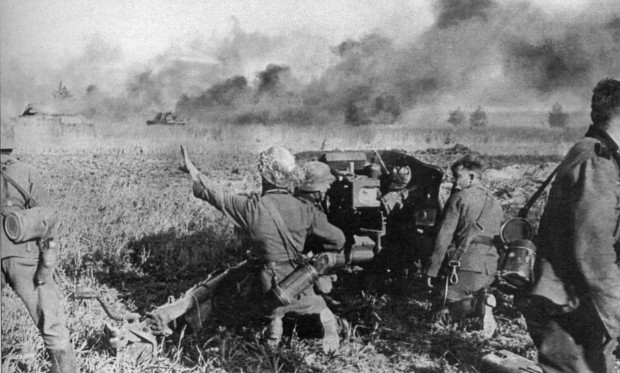Wargaming has been part of military curricula for about 200 years since the introduction of Kriegsspiel, but it is still something of an art form. This thesis, by Johan Elg, attempts to theorise the practice of military educational wargaming, and specifically to explore why such wargaming takes the form it does. The thesis is limited to army educational wargaming for officers and officer cadets. Wargaming for analytical purposes, and political and strategic gaming, are excluded. Instead, the focus is on army educational wargaming at the tactical level, which is arguably more comparable between countries. The research method combines an exploratory approach influenced by grounded theory with a comparative case study approach encompassing three successive levels of army officer education in five countries: Sweden, Germany, the United Kingdom, the United States and Japan.
Campaign Series | Steel Panthers - Hauptkampflinie
Everything about Tactical Wargaming at its finest | Campaign Series | WinSPWW2 | WinSPMBT | Scenario Design | AAR | Military History
Thursday, 15 December 2022
Saturday, 26 November 2022
Standing Fast: German Defensive Doctrine on the Russian Front During World War II | Prewar to March 1943
In this Research Survey, Major Timothy A. Wray provides an excellent survey of the intricacies of
employing defensive tactics against a powerful opponent. Using after-action reports, unit war diaries, and other primary materials, Major Wray analyzes the doctrine and tactics that the Germans used on the Eastern Front during World War II.
At the end of World War I, the Germans adopted the elastic defense in depth and continued to use it
as their basic doctrine through the end of World War II. However, because of limitations caused by difficult
terrain, severe weather, manpower and supply shortages, Soviet tactics, and Hitler's order to stand fast,
German commanders were unable to implement the Elastic Defense in its true form.
Saturday, 19 November 2022
Struggling against Inferiority: German Army Policy, 1890-1914
This thesis by Gavin J. Wiens offers us some insights about the diplomatic and geographic circumstances confronting Germany before the First
World War and the maintenance of a large standing army. In 1890
the Prussian Minister of War, Julius von Verdy du Vernois, introduced a long-term
program of army expansion intended to increase the number of active formations and
provide all able-bodied German males with military training. Whereas considerable
political and social obstacles, together with the inauguration of a naval construction
program in 1898 precluded its completion, the possibility of a two-front war thereafter
ensured that the "realization of compulsory military service" remained the fundamental
objective of the General Staff. Not even the return of budgetary preference to the army
following the second Moroccan crisis in 1911 and the subsequent approval of substantial
army bills in 1912-13 diminished the intense pressure for a large-scale increase in the
peacetime-strength and the implementation of the core principles of the "Verdy Plan."
Subscribe to:
Comments (Atom)


